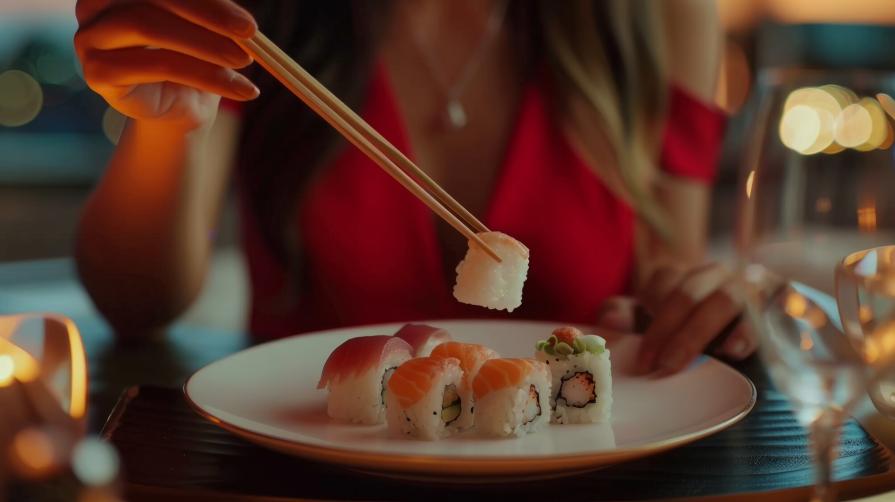Japan is the center of oriental exoticism, multiplied by modern civilization with skyscrapers, the world's steepest railway system, and the impressive Tokyo subway. As souvenirs, bone and paper crafts, netsuke figurines, fans of millions of colors and shapes and, of course, vivid impressions are taken away from this country. You've probably heard about Cat Island a million or two times, but what about feeding the reindeer in Nare Park or taking a dip in a traditional Japanese outdoor bath with views of the great Mount Fuji?
It's no wonder you get hungry for all these adventures! Japan has a surprisingly diverse cuisine – both traditional and "acquired", formed under the influence of the collective West. We will tell you where in the Land of the Rising Sun it is delicious to eat and what is the best Japanese cuisine to surprise yourself.
Why does a gourmet need Japan at all?
Perhaps you are planning to attend an anime festival and visit the grave of the most faithful dog in the world, Hachiko?
Or maybe you love Japanese food?
In any case, we have great news for you!

- First of all, Japanese cuisine is really tasty. Even ordinary rolls here are delicious, because they are really based on the freshest ingredients of the highest quality.
- Secondly, Japanese establishments have more or less decent prices, which are definitely lower than in Japanese gourmet restaurants.
- Thirdly, in any Japanese establishment, you will encounter the highest level of service - both in a cheap family institution with two types of dishes, and in a fashionable restaurant. The difference will only be in the cost of the check.
- Finally, in any Japanese café and restaurant, there are many free bonuses, which have long been forgotten in Europe. Do you want free tea? Or rice, not to mention sauces?
What to try in Japan?
Sushi and sashimi
The main Japanese dish is sushi and sashimi. The difference is that sashimi is just sliced raw fish, and sushi is placed on rice. All this is immaculately fresh, not frozen for a second. In Japan, you can taste several varieties of tuna and yellowtail, eel, shrimp and all other marine exotics. Everything is fresh, fragrant, delicious... And raw.
Sushi is served in establishments of all levels. We recommend paying attention to sushi trains! This is a kind of café where food in small trays is laid out on a transport belt and slowly travels along the tables of visitors - so that you can take what you like without leaving your place. You can also make an individual order using a tablet. You can also pay there, all without having to contact the staff (no wonder sushi trains are loved by local hickeys!).

The food here is very fresh, because the traffic is huge, the products do not have time to spoil and even lie purely physically. Also the prices are pleasing.
But rolls are not in honor in Japan - this is a foreign dish, so no "Philadelphia" and similar tastes, at best - cucumber and salmon. But they are not found everywhere either.
Ramen
A kind of Japanese analogue of a business lunch or dinner, so there are a lot of noodles (or ramen) in the country, they are literally at every step. If in order to feel like a real Chinese, you need to taste noodles or take a box of rice and vegetables from a street vendor, then in Japan ramen instead.
The portions here are very solid, there are pork or chicken broths to choose from, the filling is also put with a generous hand, so we give a tooth: you will like it!
By the way, ramen is a common name, it actually has many varieties (some meticulous experts insist that there are over a thousand, and in 2007 a cookbook with 390 recipes was published in Osaka, so we willingly believe it). There are four key ones:
- Miso ramen (with soy bean sauce),
- Classic with salt,
- Ramen with pork broth,
- Ramen with soybeans.
Also true variety is achieved, of course, by fillers.

Crabs
The Japanese have three options for cooking crab. In the first, crabs are boiled in salty sea water, "stroganina" is made, that is, sushi or sashimi, or tempura (fried in a deep fryer). In addition, kani nabe is popular - this is a traditional crab soup, nutritious and fragrant. In eateries, you can order several whole crab claws, boil them with your own hands in a small pot and eat them with a bite of sauce. Beauty and deliciousness!
Wagyu
For a very long time, meat was the privilege of the titled nobility on the Japanese islands: it was very expensive to keep cattle here, especially in the traditional model of agricultural cultivation. However, over time, the Japanese tasted and fell in love with chicken, pork and especially beef, and since they are stubborn people, it is not difficult to guess that soon they had their own beef.
The best Japanese beef is called wagyu. This is a special type of marbled beef: it is sold everywhere, but is grown on the fertile plains around the city of Kobe. Cows doomed to become wagyu are fed very nourishing, nutritious and vitamin-rich food, they are massaged (!), they are allowed to walk on emerald grass. Each piece (!) of wagyu beef undergoes numerous certifications, so this meat is not only beautiful and tasty, but also fabulously expensive.
Although in Japan, its prices are still lower than abroad.
In some restaurants in Kobe, there is an interesting thing: you can choose a piece of meat and fry it yourself to your taste, but we would still recommend leaving this matter to a specialist (especially since he will still fry right in front of your eyes).

Fugu
Fugu fish is considered a specific delicacy. The thing is that its flesh contains a nerve toxin in quantities sufficient to send several people to the next world. In the old days, this happened quite often, but for half a century now, the Japanese have put the preparation of fugu under state control and began to issue a license for this to chefs. In 2025, there are a little more than 30 thousand valid licenses in Japan.
The secret is to cut the fish so as not to spread the toxin to its meat! The highest manifestation of culinary art is to do this, but in moderation - so that the guests experience a feeling of euphoria from poisoning, but nothing more. However, we no longer recommend this option, of course.
To be honest, the taste of the puffer fish is the most ordinary, nothing outstanding. The whole thing is in the rarity and unusual cooking procedure, as well as the associated risks.
Regional dishes
Of course, like any country that has lived in conditions of feudal fragmentation for centuries, each Japanese province has something of its own, local, amazing in full height and unlike anything else.
- In the vicinity of Osaka, for example, they make taroyaki/takoyaki - round balls of dough stuffed with octopus, onions and pickled ginger, covered with a crispy crust and creamy inside. It is customary to serve them directly from the heat, sprinkled with small fish stroganina and dipped in sauce and mayonnaise. And then there are okonomiyaki (in addition to Osaka, they are also made in Nagoya, but in fact they are two completely different dishes due to the sauce) - a flatbread with a spicy taste, stuffed with cabbage and various seafood.
- In Kobe, as we have already mentioned, the incomparable wagyu beef is grown and cooked.
- Sapporo has a wonderfully hearty and spicy ramen with soy sauce...
So it is in all prefectures and even counties - in each there is something unusual and bright, capable of striking even the most demanding traveler in the heart (and stomach!).














